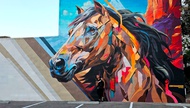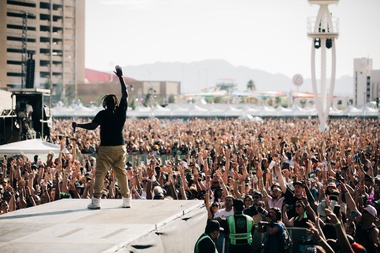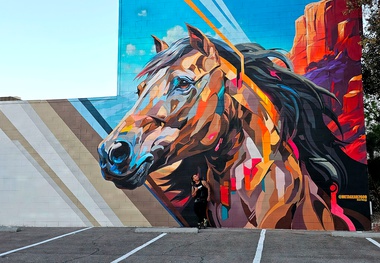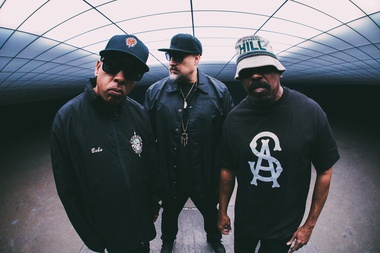Thus far, life has not been particularly good to MGM Mirage’s CityCenter. The multibillion-dollar development has been hit by a slew of problems—construction worker deaths, building defects, financial difficulties—and there’s a palpable sense that, even if it opens on time, the city and county are so deeply mired in recession that it will be a minor miracle if the casino operator can fill the damn thing.
And yet, as it begins to assume its final, commanding form on the Las Vegas skyline, CityCenter is likely to be the most iconic landmark to hit town since the Mirage in 1989, or maybe even since the Welcome to Las Vegas sign in 1959.
It comes as some relief, then, that MGM Mirage is moving forward with an ambitious, $40 million public art program—which makes sense, since the company bought or commissioned the works two years ago, before the economy went bust.
Like the buildings themselves, the art can’t be described as glamorous kitsch. Expect assertive, Las Vegas-style exuberance. “The idea behind this is, this is a very dynamic property,” says Michele Quinn, the project’s curatorial advisor. “The art doesn’t have one theme or one train of thought.”
As the art was selected, two primary goals emerged: to make it as accessible as possible and to humanize the massive buildings and bring down their scale (look at CityCenter next to Monte Carlo to appreciate how big it really is).
More
- Beyond the Weekly
- CityCenter Fine Art Program
- MGM, Dubai World reach CityCenter agreement; lawsuit dropped (Las Vegas Sun, 4/29/09)
Quinn spent two and a half years considering more than 100 artists before settling on 15 pieces—six acquisitions and nine commissions—by artists with reputations to match those of the architects behind the buildings. “There’s nothing small about what we’ve done on the site,” Quinn says.
Indeed. Maya Lin, designer of the Vietnam Veterans Memorial, has designed an 84-foot silver cast of the Colorado River that will be suspended in the reception area of the main hotel-casino, Aria. Conceptual artist Jenny Holzer is designing a 250-foot LED screen. There will also be work by famous (and ubiquitous) British sculptor Henry Moore—thankfully done in a handsome travertine rather than his more common bronze—and a four-ton steel and fiberglass sculpture of a blue and red typewriter eraser from Claes Oldenburg and Coosje van Bruggen.
If anything will take center stage, it might be a large version of Nancy Rubins’ work “Big Pleasure Point.” Fifty feet tall and 80 feet long, Rubins’ piece is a starburst-colored explosion—canoes and surfboards and sails that appear to hover off the ground. Positioned in front of the Vdara condo hotel, it should provide a perfect counterpoint to architect Rafael Viñoly’s tightly tailored, pinstriped building. “Big Pleasure Point” was the first work to be installed at the site, last weekend; the rest should be in place by October, in anticipation of CityCenter’s debut in December.
With the closing of the Las Vegas Art Museum, 2009 hasn’t been a particularly good stretch for art in Las Vegas, either. But Quinn predicts the art at CityCenter will have the type of galvanizing effect on Vegas’ cultural life that Millennium Park has had in Chicago. “There is a new understanding that art is not necessarily just a painting on the wall,” she says. “It can be much more a part of the entire environment.” Even an environment as economically distressed as this one.










Previous Discussion: